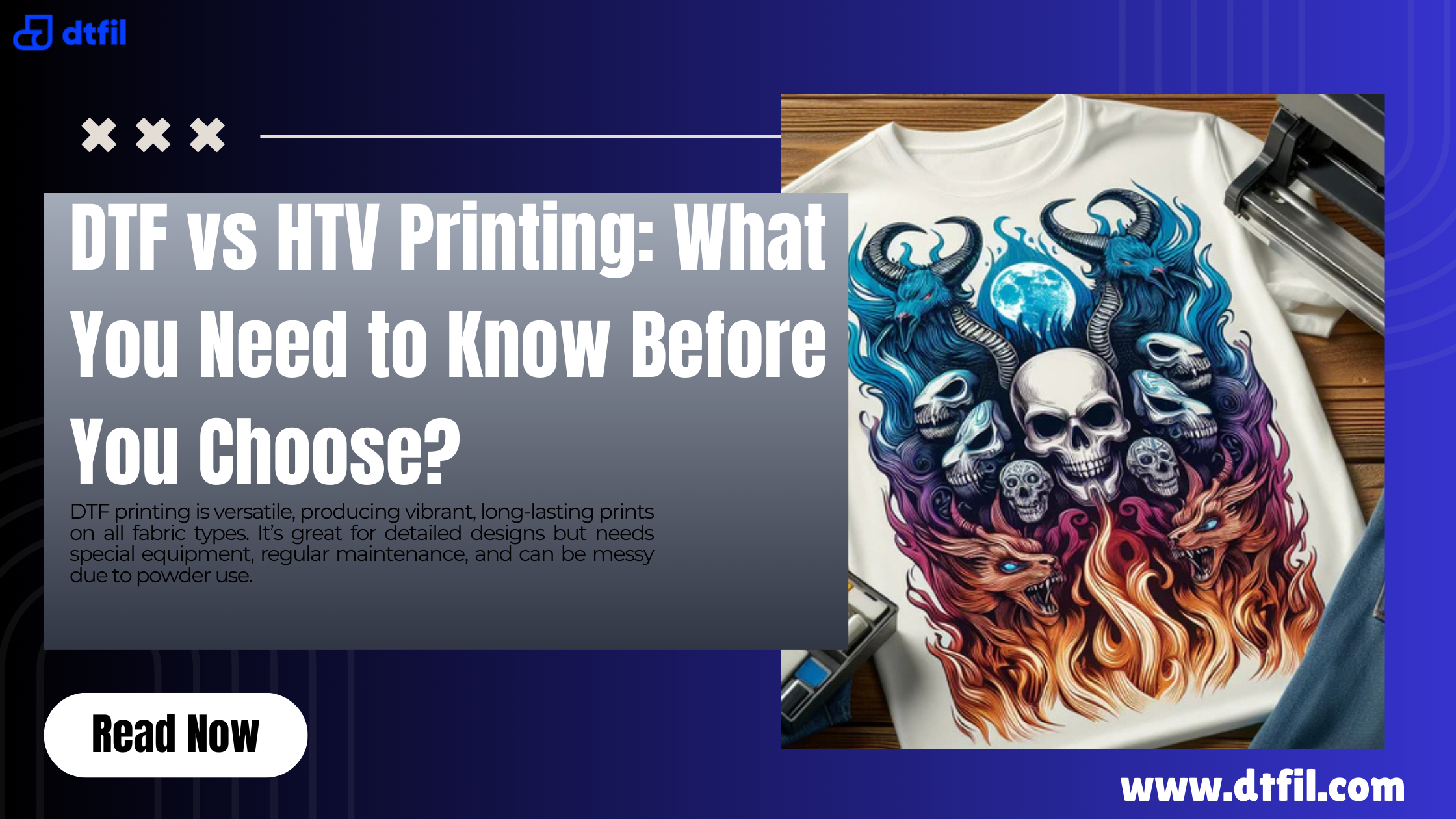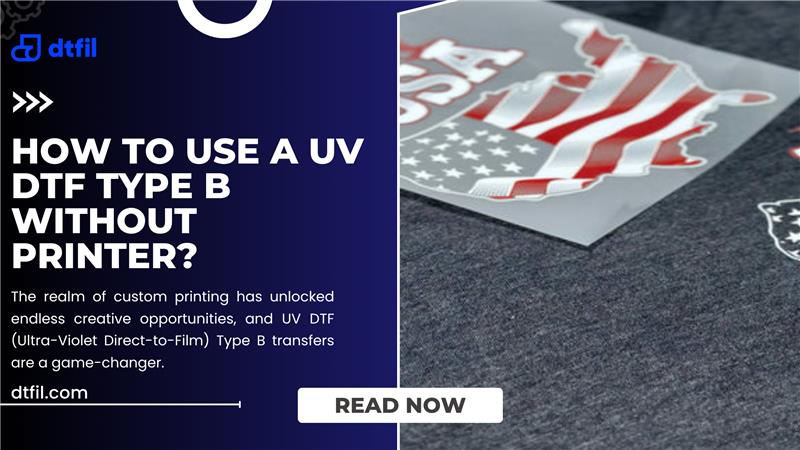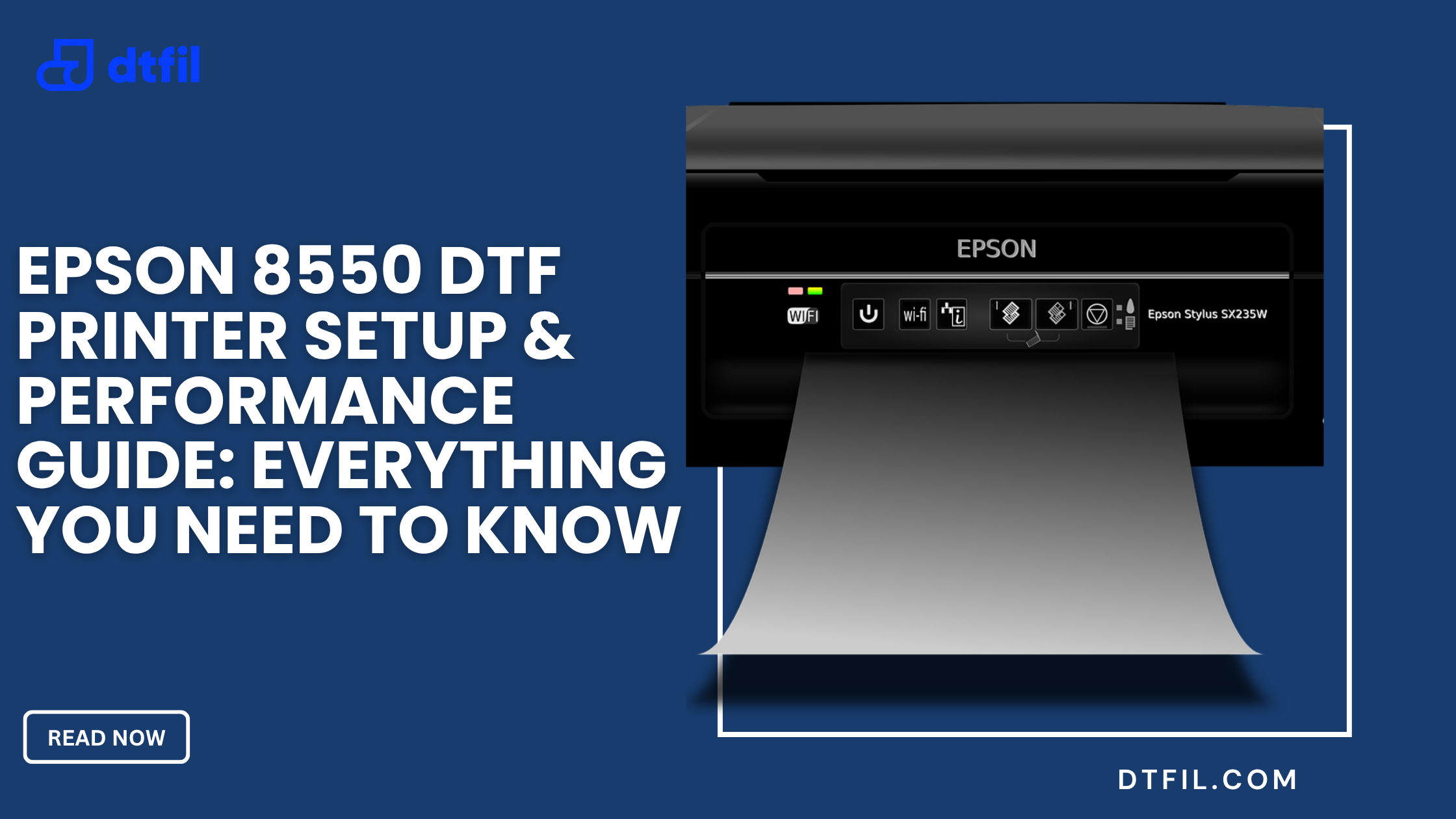Bringing your designs to life is one of the most exciting parts of crafting and printing. With so many methods out there, it’s easy to feel overwhelmed. But there’s a clever shortcut that’s making waves among creators, the sublimation hack using DTF transfer sheets.
This simple trick helps you get bold colors and sharp details on all sorts of projects. In this guide, you’ll learn how to use it effectively and give your prints a professional touch. Let’s get started!
Understanding Sublimation vs DTF: Key Differences
To get started, it’s helpful to understand the difference between sublimation and DTF. Sublimation printing uses heat to transform sublimation ink into a gas that bonds with polyester fibers, creating vibrant, durable prints.
However, it’s restricted to light-colored, high-polyester fabrics because sublimation ink lacks a white base, making it tough to sublimate on dark shirts without losing color vibrancy.
DTF printing (Direct-to-Film) involves printing designs onto a special film, applying DTF powder, and transferring them to fabrics such as cotton, polyester, or blends. In contrast to sublimation, DTF inks include a white layer, enabling vivid prints on any fabric color.
The DTF sublimation hack combines these by using a sublimation printer with sublimation ink on DTF film, paired with DTF powder, to print on diverse fabrics without a DTF setup. This clarifies the question: Is DTF the same as sublimation? They’re different, but this hack merges their strengths for versatile results.
What You’ll Need for the DTF Sublimation Hack?

To begin with, the sublimation hack with DTF transfer sheets, gather these essentials:
-
Sublimation Printer: A printer loaded with sublimation ink, for printing your designs.
-
DTF Film for Sublimation: Coated DTF paper for sublimation, ideally double-sided matte, to absorb ink effectively.
-
DTF Powder: This adhesive powder binds the ink to the fabric during heat pressing
-
Heat Press: A reliable heat press for curing powder and transferring designs.
-
Design Software: Tools like Canva or RIP software to create and mirror designs.
-
Protective Gear: Gloves, goggles, and a ventilated workspace for safe handling of DTF powder.
-
Teflon Sheet or Butcher Paper: To protect your heat press and garment during pressing.
With these, you’re ready to dive into how to use DTF powder for sublimation and create professional prints.
Step-by-Step Guide to the DTF Hack with Sublimation Ink
Here’s how to execute the DTF sublimation hack for vibrant, lasting prints:
Step 1: Create Your Design
Design your artwork in software, ensuring it’s mirrored for correct transfer orientation. Save it in high-resolution PNG format. Use bold colors, as sublimation ink vs DTF ink may fade in lighter areas without enough density. This ensures your design stands out.
Step 2: Print on DTF Film
Load DTF film for sublimation into your sublimation printer, with the matte, ink-absorbing side up (check film instructions). In printer settings, select “photo paper glossy” or “normal” quality to prevent ink bleeding, as high-quality settings can oversaturate the film. Print the design, keeping the sublimation ink on DTF film wet for the next step.
Step 3: Apply DTF Powder
While the ink is wet, evenly sprinkle DTF powder over the printed design, covering all areas. Gently shake off excess powder for reuse. This powder acts as the adhesive binding sublimation ink to the fabric. Handle it carefully, using gloves and goggles to avoid inhaling particles.
Step 4: Cure the Powder
Cure the DTF powder to activate its adhesive properties. Use a curing oven for precision or hover a heat press platen at 300-315 degrees for 10-13 seconds until the powder turns glossy. Check your powder’s instructions for exact curing times. Proper curing ensures a clean transfer.
Step 5: Transfer to Fabric
Pre-press your garment (cotton, polyester, or blends) for 3-5 seconds to remove moisture and wrinkles. Place the cured DTF film design-side down on the fabric, cover with a Teflon sheet or butcher paper, and press. For sublimation printer T-shirts, set the heat press to medium pressure, as sublimation ink requires higher heat than DTF inks. Let the garment cool completely before peeling the film (cold peel) to avoid smudging.
Step 6: Final Press for Durability
For added durability, cover the transferred design with a Teflon sheet and press again. This locks in the transfer sublimation, ensuring vibrant, wash-resistant prints.
Tips for Perfecting the DTF Sublimation Hack

To excel with the sublimation hack with DTF transfer sheets, follow these tips:
-
Stick to Light Fabrics: Since sublimation ink lacks white ink, this hack works best on white or light fabrics. Sublimating on dark shirts may result in muted colors, so test thoroughly.
-
Test Heat Settings: Sublimation ink on DTF film requires experimenting with heat press settings. Start at 300-315 for 10-13 seconds and adjust to avoid ink bleed.
-
Choose Quality Supplies: High-quality DTF paper and powder ensure better ink adhesion and transfer. Poor materials can lead to uneven prints or peeling.
-
Maintain Your Printer: Clean your sublimation printer regularly to prevent clogs, as DTF film interacts differently with sublimation ink than sublimation paper.
-
Wash Carefully: Wash garments inside out in cold water and tumble dry on low to preserve designs. Proper curing reduces cracking risks.
Addressing Limitations of DTF with Sublimation Ink
The DTF hack with sublimation ink has some constraints:
-
No White Ink: Sublimation ink can’t produce white, limiting vibrancy on dark fabrics compared to DTF inks with a white layer.
-
Durability Concerns: Prints using DTF with sublimation ink may be less durable than those with DTF inks, especially after repeated washing.
-
Learning Curve: Consistent results with DTF paper for sublimation require practice with settings and materials.
Despite these, the DTF sublimation hack is a cost-effective way to expand your printing capabilities with a sublimation printer.
Is DTF Sublimation the Best Fit for You?
Choosing between DTF vs sublimation depends on your goals. If you have a sublimation printer and want to print on cotton or other fabrics without a DTF printer, the DTF hack with sublimation ink is a budget-friendly solution. It’s ideal for light fabrics but requires testing for darker ones due to sublimation ink vs DTF ink limitations.
Read more: How to Make DTF Transfers: Step-by-Step Guide for Beginners – DTF Illinois
Expanding Your Creative Options
The sublimation hack with DTF transfer sheets opens up exciting possibilities for custom apparel. You can experiment with various fabrics, from T-shirts to tote bags, and create unique designs that stand out.
The ability to use sublimation ink on DTF film makes this method accessible for hobbyists and small businesses looking to diversify without heavy investment. With practice, you can refine your technique to produce consistent, eye-catching results that rival professional DTF prints.
Troubleshooting Common Issues
If you encounter challenges, here’s how to address them:
-
Faded Colors: Ensure your design has high ink density and test on light fabrics. Sublimation ink struggles with vibrancy on dark colors.
-
Powder Not Sticking: Verify the ink is wet when applying DTF powder, and check curing temperatures.
-
Peeling Prints: Confirm proper curing and pressing times. Use quality DTF paper and powder to improve adhesion.
Scaling Up Your Projects
Once you’ve mastered the DTF sublimation hack, consider scaling up. Batch-process designs by printing multiple DTF films at once, curing them together, and pressing in bulk. This saves time and boosts efficiency for small businesses.
You can also explore advanced RIP software to optimize ink usage and color accuracy, enhancing the quality of your sublimation printer T-shirts.
Conclusion
The Sublimation Hack with DTF Transfer Sheets empowers crafters to produce vibrant, durable prints on cotton and other fabrics using a sublimation printer, eliminating the need for costly DTF equipment.
By understanding the difference between sublimation and DTF, sourcing quality DTF paper and powder, and following precise steps, you can achieve professional-grade results. While challenges like sublimating on dark shirts exist, this hack excels for light fabrics and offers unmatched flexibility.
At DTFIL, we offer premium DTF film, DTF powder, and expert advice to ensure vibrant, durable prints. Our dedication to quality helps you turn your creative vision into reality. Visit us now and start printing today, and bring your designs to life!
FAQs
Can you use DTF sheets in a sublimation printer?
No, you can’t run DTF sheets through a sublimation printer because sublimation printers use special inks and papers, while DTF sheets require different inks and processes.
Can you use DTF powder on sublimation ink?
Applying DTF powder to sublimation ink doesn’t work well because sublimation inks are designed to turn into gas under heat, not bond with adhesive powders like DTF ink does.
Can you use DTF on sublimation blanks?
Yes, you can use DTF on sublimation blanks like polyester shirts or coated items, but the result may differ from sublimation since DTF sits on top while sublimation infuses into the surface.
What temperature for DTF hack?
For the DTF hack using sublimation ink, press at around 300-315 for 10-13seconds, but always test settings as results vary based on materials and equipment used.
Read more:
DTF vs Sublimation & Other Printing Methods: A Complete Guide – DTF Illinois








